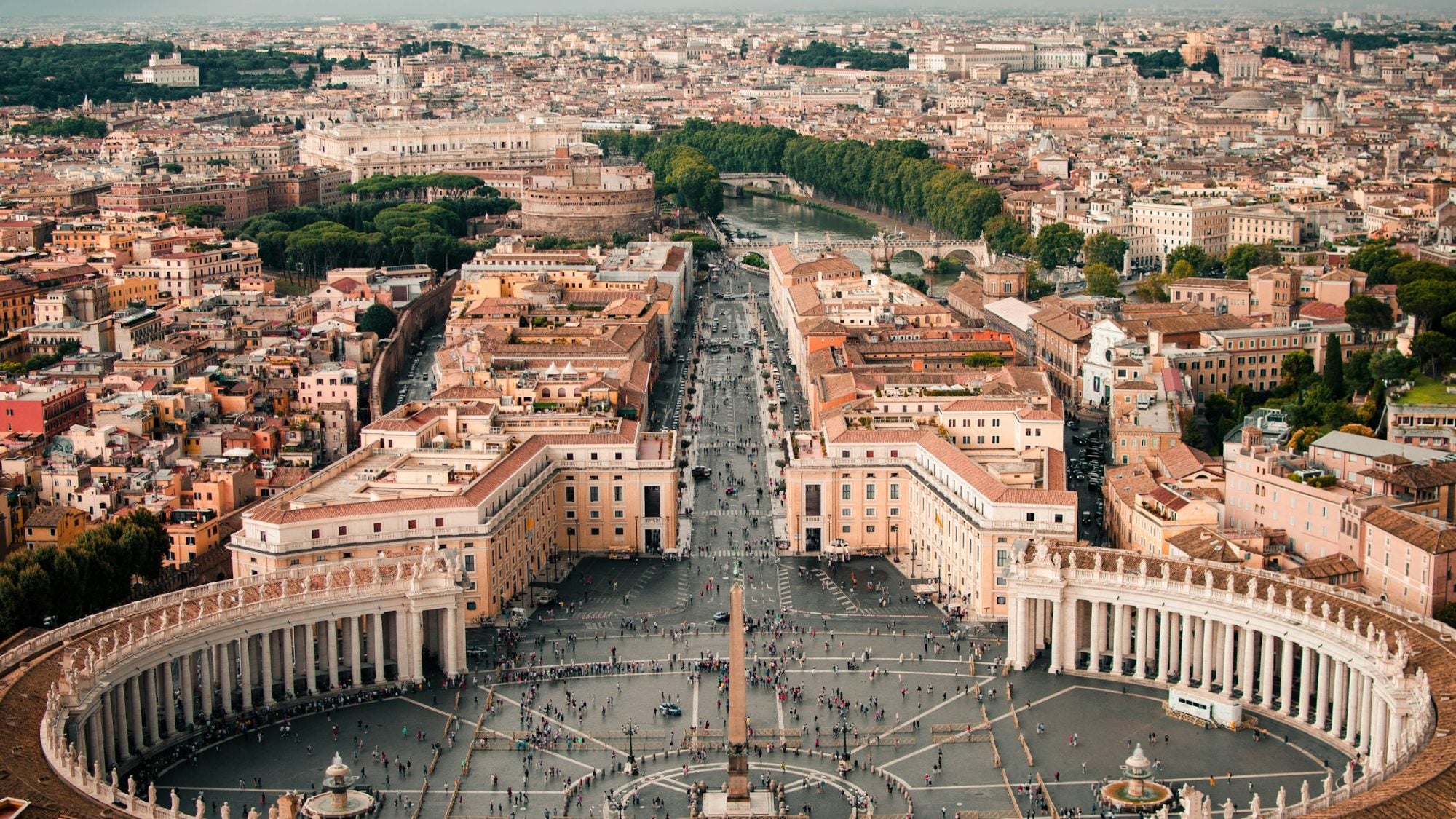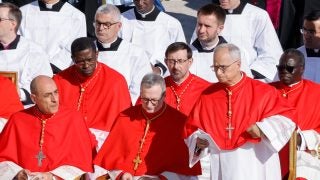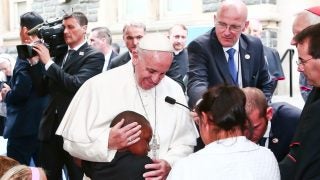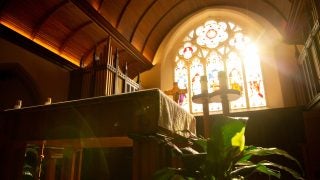On May 7, the papal conclave to select the new pontiff of the Roman Catholic Church will begin after the funeral and mourning period for Pope Francis.
Cardinals from all over the world will cast their votes for the next pope in a process that has remained relatively unchanged for the last nearly 800 years – and has always been cloaked in secrecy. In the 13th century, cardinals were locked in a room and fed bread and water through a window until they made a decision. Today, conditions are more comfortable, but the atmosphere is still secretive.

On May 7, the Sistine Chapel will be sealed, and the cardinals and Vatican staff who will interact with the cardinals during the conclave will swear an oath of secrecy, said Vanessa Corcoran, an advising dean in the College of Arts & Sciences and a scholar of medieval religious history.
“If everyone upholds their oath, we won’t hear any news until we see the first billows of smoke,” Corcoran said.
Dive into the history of the conclave and what happens behind the closed doors in this Q&A with Corcoran.
The History of the Papal Conclave
How does the voting process work in the conclave?
Canon law stipulates that any baptized, unmarried man is technically eligible to become pope. Despite that language, we will see a pope elected among the College of Cardinals. There are 135 eligible cardinals under the age of 80, 108 of whom were appointed by Pope Francis (representing 71 different countries).
The “rulebook” for the conclave is found in the apostolic constitution. Cardinals vote until a candidate secures a two-thirds majority. In each round of voting, the cardinal will fill in their candidate’s name on a card that says, Eligo in summum pontificem (“I elect as supreme pontiff.”). Each cardinal will then approach the three scrutineers in front of Michelangelo’s Last Judgment fresco, and drop the ballot in an urn. After the ballots have been tallied, they will be burned. Black smoke means a failed vote, white smoke means a new pope.
If elected, the cardinal will be asked if he will accept. He will then reveal his papal name, which will be announced to the world from a window facing St. Peter’s Square.
Why does the pope choose a new name?
For centuries, popes simply used their baptismal name upon election. However, in 533 C.E., a priest named Mercurius was elected pope. Uncomfortable being named after a pagan Roman god, he selected a new name, John II, after a previous pope. Since then, most popes have chosen a new name, usually after a previous pope whose legacy he hopes to emulate. Some of the most frequently used papal names have been John (23), Gregory (16), Benedict (16), Clement (14), Innocent (13), Leo (13) and Pius (12). Most likely, the new pope will pick a name to reflect his own vision of the papacy and common values held with a particular predecessor.
Pope Francis was selected in two days. How long do conclaves typically last? Why is white smoke used to signify the selection of a pope?
In 1268-1271, the cardinals remained deadlocked and could not select a pope. This took place north of Rome in Viterbo — papal elections sometimes took place outside of Rome if local violence threatened the safety of the cardinals. Local magistrates and residents became so frustrated that they locked the cardinals into a room until a decision was made.
This is where the term conclave originates: conclave means “with a key” in Latin. The cardinals were only fed bread and water that was passed through a window. When these rigid conditions did not expedite the process, the magistrates literally removed the roof of the Palazzo dei Papi “to let the Holy Spirit in.” This led to the election of Pope Gregory X, who laid the foundation for the conclave process that is used today.
For the upcoming conclave, the conditions will be much more comfortable than in Viterbo, and on average in recent history, a pope has been elected within two to three days of the start of the conclave. The process of using white smoke to signal that a pope has been elected (black smoke means a failed vote) began in 1914. The smoke is a combination of the ballots that are burned and a mix of chemicals. However, because it is sometimes difficult to discern the difference between the white and black smoke, more chemicals are added, and beginning in 2005, bells will chime once a pope has been elected, and it will be announced “Habemus Papam!” (“We have a pope!”).
What is the atmosphere generally like inside the Sistine Chapel during the conclave? How will they preserve the secrecy of the voting process, particularly in a digital age?
Though the formal conclave begins on May 7, the College of Cardinals has been meeting regularly since the funeral of Pope Francis, including setting the start date of the conclave. Not only do the cardinals take an oath of secrecy, but the Vatican drivers, health care workers, kitchen staff and anyone else in contact with the cardinals will swear an oath of secrecy as well. The Sistine Chapel is now closed for public visits, and the entire apostolic palace is currently being “swept” and safeguarded from hidden cameras, microphones, phones and drones. Armed guards will surround the Sistine Chapel throughout the conclave.
After Mass on May 7, the cardinals will file into the Sistine Chapel. Italian Archbishop Diego Ravelli will stand at the door and call out “Vacante Omnes” (Everyone, out!) and close the door of the Sistine Chapel, formally sealing the conclave. If everyone upholds their oath, we won’t hear any news until we see the first billows of smoke.
Pope Francis was the first non-European pope since the 8th century. What are the prospects for another non-European pope? And what might the next pope’s home country signify about the direction of the Church?
There are 1.4 billion Catholics in the world, and the majority are from the Global South, so there is a lot of hope that the new pope will come from Asia, Africa or Latin America. There have been three African popes, the last was Gelasius I (492-496) — the first pope to be called “The Vicar of Christ.” But the majority of popes have been European, particularly Italian, and 53 of the eligible cardinals are European. However, after three consecutive non-Italian popes (John Paul II, Poland; Benedict XVI, Germany; and Francis, Argentina), it is possible that some cardinals will converge around an Italian candidate.
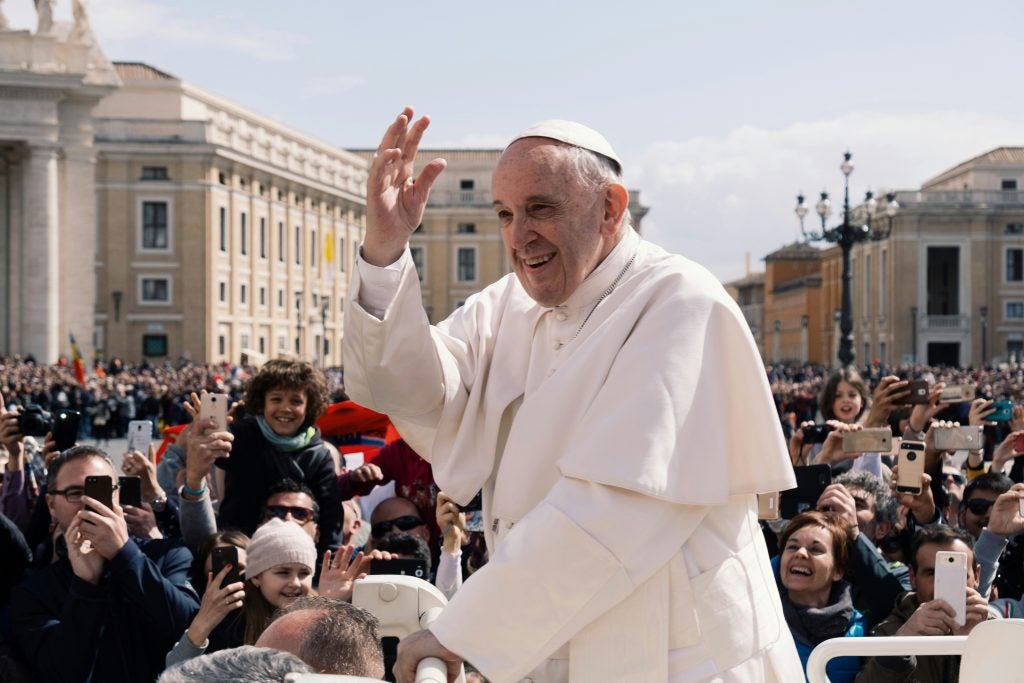
Francis was the only Jesuit pope in Church history. Why has it been rare for Jesuits to be popes? What are the chances of the next pope being a Jesuit?
Compared to some of the other religious orders (such as Franciscans, Dominicans and Benedictines, all of which were founded in the Middle Ages), the Jesuits are a relatively new religious order —St. Ignatius of Loyola received papal approval to found the Jesuits in 1540.
During the Suppression of the Jesuits from 1773 to 1814, members of the Society of Jesus were ordered to renounce their vows and go into exile. All of this made it more notable when Pope Francis was elected as the first Jesuit pope. Given that only three eligible cardinals are Jesuits, it is unlikely we’ll see a consecutive Jesuit pope. Ignatius of Loyola viewed education as one of the most important ways of promoting “the betterment of souls” which was why at Georgetown University, the oldest Jesuit and Catholic university in the U.S., Pope Francis’s election was so widely celebrated.
What are the main challenges facing the next pontiff? How might the next pope be a continuation or a pivot from Pope Francis’ papacy?
Given that Francis appointed the majority of the cardinals who will elect his successor, it is fair to expect that the next pope will embrace many aspects of Pope Francis’s papacy. There are ongoing issues that the new pope will face, including the role of women in the church, the inclusion of LGBTQ+ Catholics, the relationship with the Global South, healing and accountability from the clerical sexual abuse scandals and promoting interreligious dialogue.
In reflecting on the Synod of Synodality (a global process of listening and dialogue from 2021-2024), Pope Francis said, “What interests me most of all is that this time, this journey helps all of us to live communion, participation, co-responsibility, being truly one body in a more meaningful, truer and deeper way.” This sentiment espouses his vision for the Church and its relationship with the larger world, and I would hope the next pope will share that same vision for synodality (“a coming together”).
What are you personally hopeful for in a new papacy?
Since his passing, I’ve been moved by the stories about how Pope Francis continued to minister to the marginalized, even when he was gravely ill. Less than a week before he passed away, Pope Francis visited a crowded prison on Holy Thursday and emptied his personal bank account to provide financial assistance to the prisoners.
Even following his hospitalization, Francis continued to make regular phone calls to members of the only Catholic Church in Gaza, doing so until two days before his death. As he made his funeral arrangements, Pope Francis had requested that an honor guard composed of migrants, Muslims, the homeless, prisoners and transgender people be the people to welcome him to the Basilica of Mary Major, where he was buried.
Just as he shied away from living in the Apostolic Palace (and instead lived in a bare apartment), Pope Francis selected a simple tomb away from the spotlight of St. Peter’s. One of the papal titles is Servus Servorum Dei (“Servant of the Servants of God”), and that encapsulated his ministry. I hope that sentiment is the message that guides the College of Cardinals as they elect the 267th pope of the Catholic Church.
